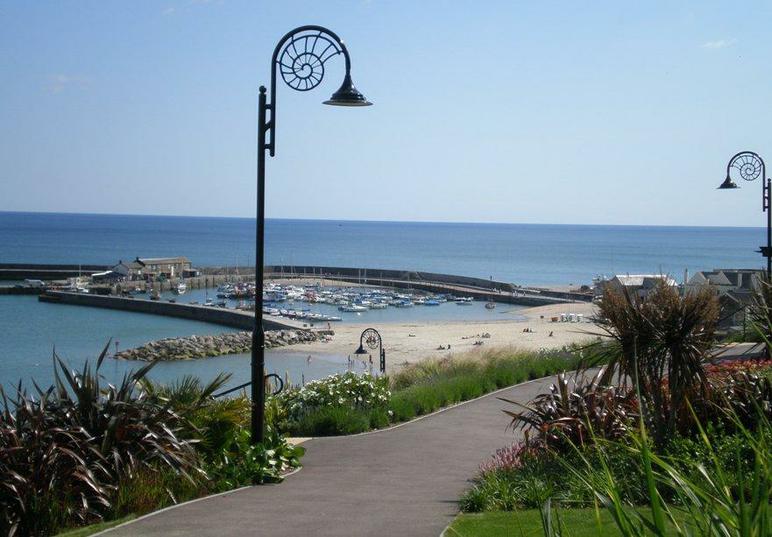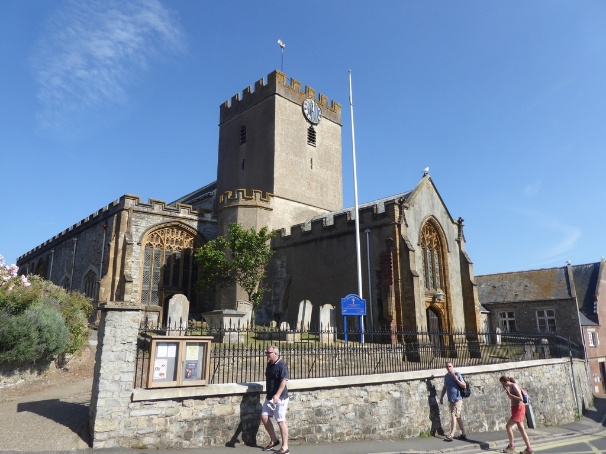Christian Distinctiveness
Christian Distinctiveness

St Michael’s Church of England Primary School, Lyme Regis is a small, friendly seaside school with around 64 pupils taught across three mixed-age classes. Nestled in the heart of the beautiful Jurassic Coast, our school offers a unique learning environment where children are inspired by the natural world around them.
Our dedicated team of teachers and support staff work together to create a nurturing, inclusive, and stimulating atmosphere. We believe that learning should be exciting and meaningful, and our creative curriculum reflects the richness of our coastal setting—encouraging exploration, curiosity, and a deep connection to nature.
At the heart of our school is our guiding Christian principle:
“Do to others as you would want them to do to you.”
(Luke 6:31)
This value shapes our daily life and is reflected in our core values of respect, honesty, kindness, compassion, and trust. These values help us build a caring and respectful community where every child feels safe, supported, and empowered to grow.
We enjoy close links with our local church and community, and are supported by the Salisbury Diocesan Board of Education. Religious Education is a core part of our curriculum, and daily acts of collective worship bring our school together to reflect, celebrate, and grow in faith.
At St Michael’s, we are proud to nurture happy, confident, and compassionate children who are inspired to aim high and live life in all its fullness.
Collective Worship at St Michael's
At St Michael’s, nestled in the heart of the beautiful Jurassic Coast, Collective Worship is a daily time when children and staff come together to reflect, pray, and celebrate our Trust-wide, shared Christian values of Love, Hope, and Joy.
These times are not just scheduled events—they are special, shared opportunities to grow spiritually and as a community.
Our worship is rooted in the teachings of Jesus, especially the guiding principle: “Do to others as you would have them do to you” (Luke 6:31)
This underpins our five core values—Trust, Honesty, Compassion, Respect, and Kindness—which shape every aspect of school life.
Worship is led by a variety of voices: our Head Teacher, staff, children, Governors and visitors from local churches. We are proud of our strong links with St Michael’s Church and other churches in the area, who regularly join us to lead worship and celebrate key festivals such as Harvest, Christingle, Christmas, Easter, and Mother’s Day.
A highlight of our week is the ‘Open the Book’ sessions, held every Wednesday afternoon. These are led by our governors and parish volunteers who bring Bible stories to life through drama, which our children thoroughly enjoy.
These sessions help deepen understanding and make scripture accessible and engaging.
We believe worship should be inclusive and welcoming. Every child and adult is valued equally in God’s sight, and we respect the diverse backgrounds and beliefs within our school community. Worship provides a calm and reflective space where everyone can explore their own spiritual journey, ask big questions, and find peace.
Our worship themes align with our core values, the Church calendar and support our RE curriculum. We use a rich mix of stories, music, poetry, images, and drama to inspire and challenge, helping children to grow in character, confidence, and community spirit.
As a proud member of the Diocese of Salisbury Academy Trust, we are committed to nurturing a distinctive church ethos. We work closely with our church partners to serve our wider community, cherishing and supporting every member of our school and church families.
Religious Education at St Michael's
At St Michael’s Church of England Primary School, Lyme Regis, Religious Education (RE) is a vital part of our curriculum and central to our Christian ethos. We aim to provide children with a rich and meaningful understanding of faith, belief, and the world around them, rooted in our core value:
“Do to others as you would want them to do to you.”
(Luke 6:31)
We use a combination of high-quality resources to deliver RE, primarily drawing from Understanding Christianity and The Emmanuel Project. These schemes support our vision by helping children explore religious concepts with depth, creativity, and relevance.

This resource, developed by the Church of England Education Office, helps children build a coherent understanding of Christian belief and practice. It encourages pupils to reflect on theological ideas and how they relate to their own lives and the wider world. Through engaging units, children explore key concepts such as creation, salvation, and the nature of God, developing both religious literacy and personal insight.

Created by the Diocese of St Edmundsbury and Ipswich, the Emmanuel Project offers a complete set of enquiry-based RE units for primary schools. These lessons are designed to be both challenging and enjoyable, encouraging children to ask big questions and think deeply. The project includes background notes and guidance for teachers, ensuring that RE is taught with confidence and clarity.
Together, these resources help us deliver a curriculum that is inclusive, thought-provoking, and rooted in Christian values. Our RE lessons encourage children to explore faith, understand different worldviews, and develop respect and compassion for others—preparing them to live life in all its fullness.
School Church

There has been a church on this site since AD 774 when the land was granted to the monks of Sherborne. The church was updated and rebuilt by the Normans around AD 1120, retaining much of the original Saxon stonework.
The remarkable and enigmatic Lyme Tapestry, widely thought to be the work of Flemish weavers around 1490, hangs on the north side of the nave. The 10 church bells are known for their quality and in 1995, the longest continuous peal of Surprise Royal was undertaken, ringing for almost 12 hours, a real feat of endurance.
Mary Anning is buried in the churchyard with her brother Joseph. Their grave was recently restored. Mary is commemorated in a stained glass window provided by members of the Geological Society of London, an organisation which did not admit women until 1904.
The spiked church railings were famously used to display the heads and quarters of the rebels who were convicted in the ‘Bloody Assizes’ in 1685. They remained here until King James II was deposed in 1688 and any attempt to remove body parts would result in severe punishment.

